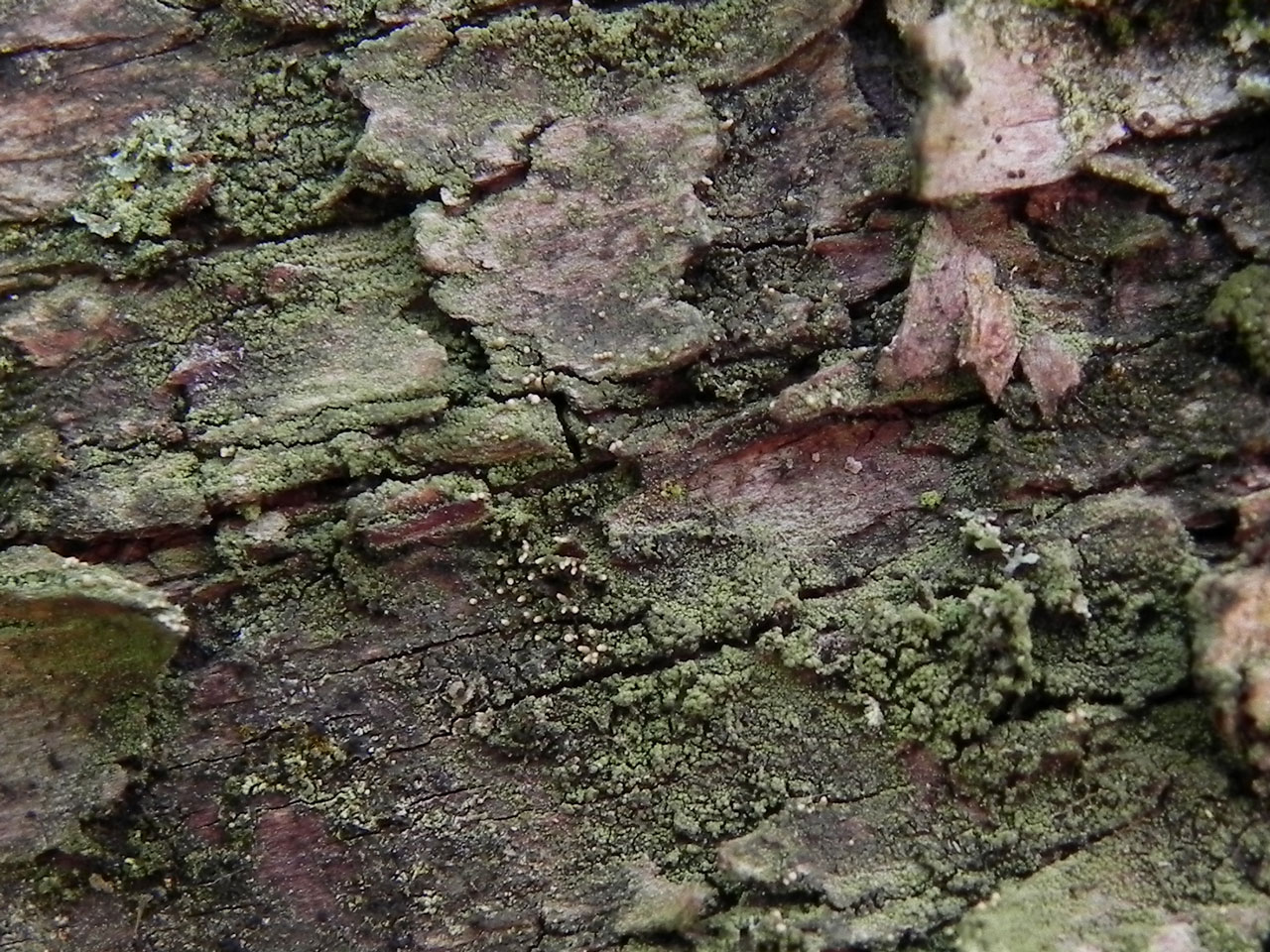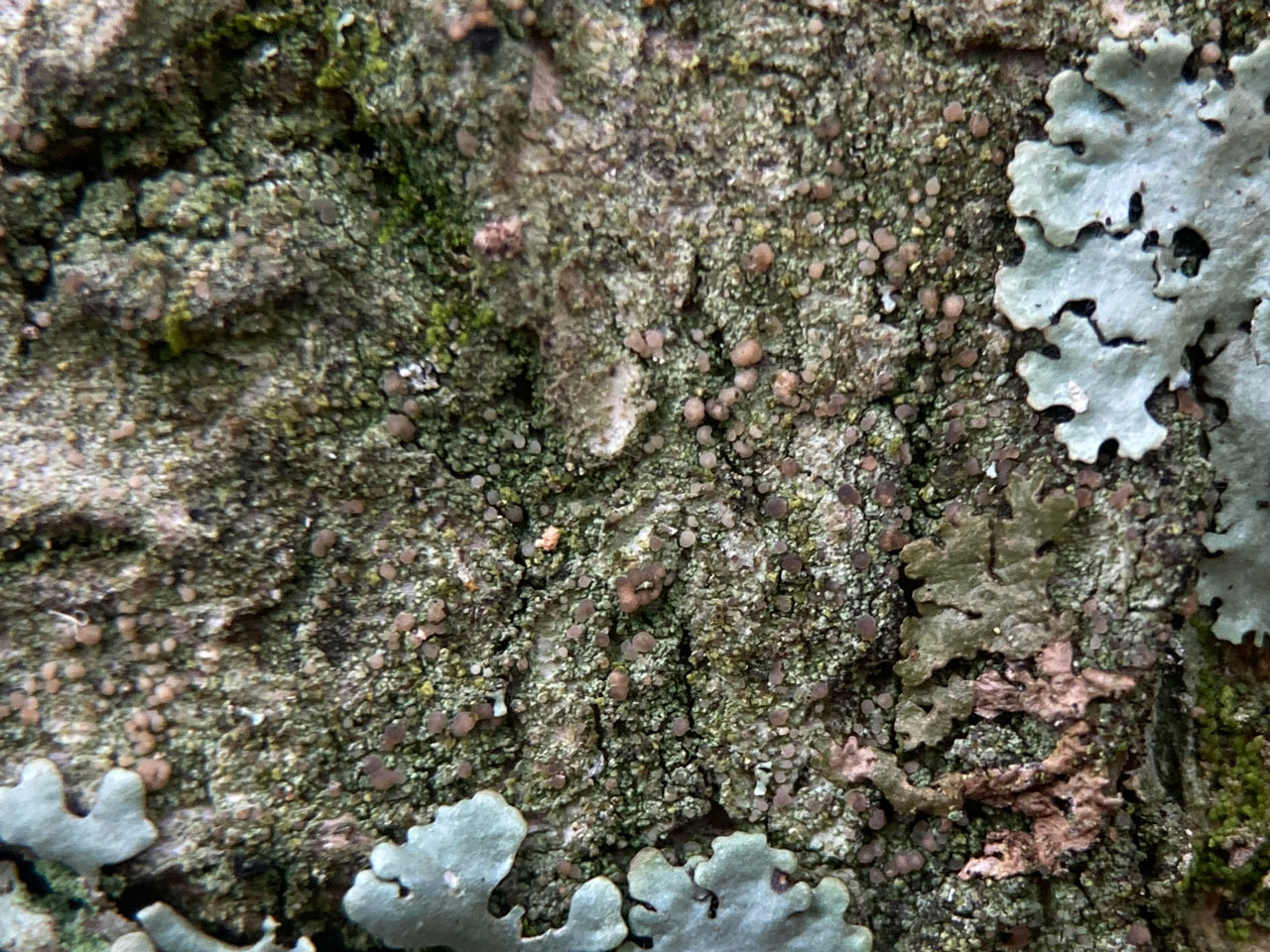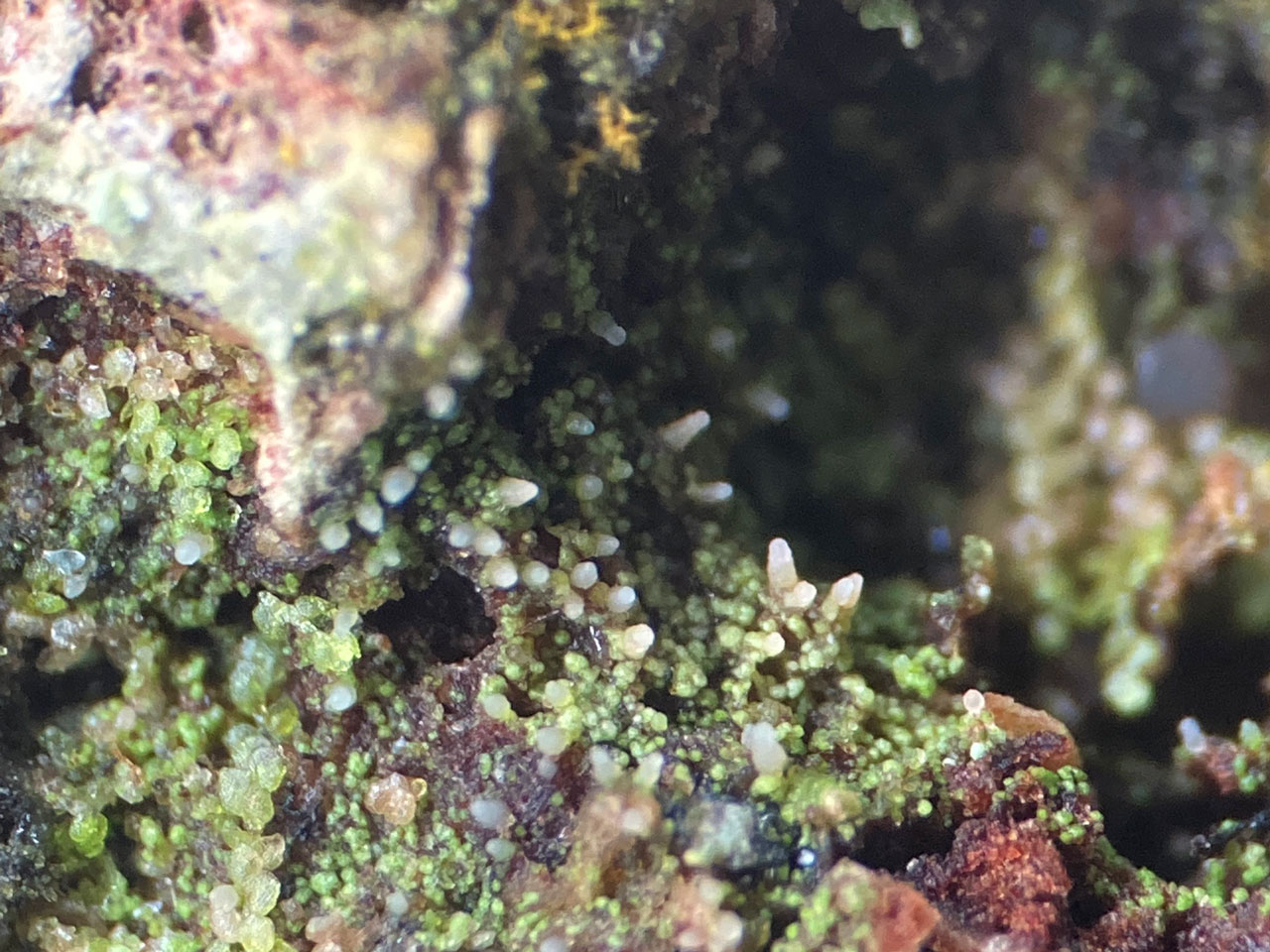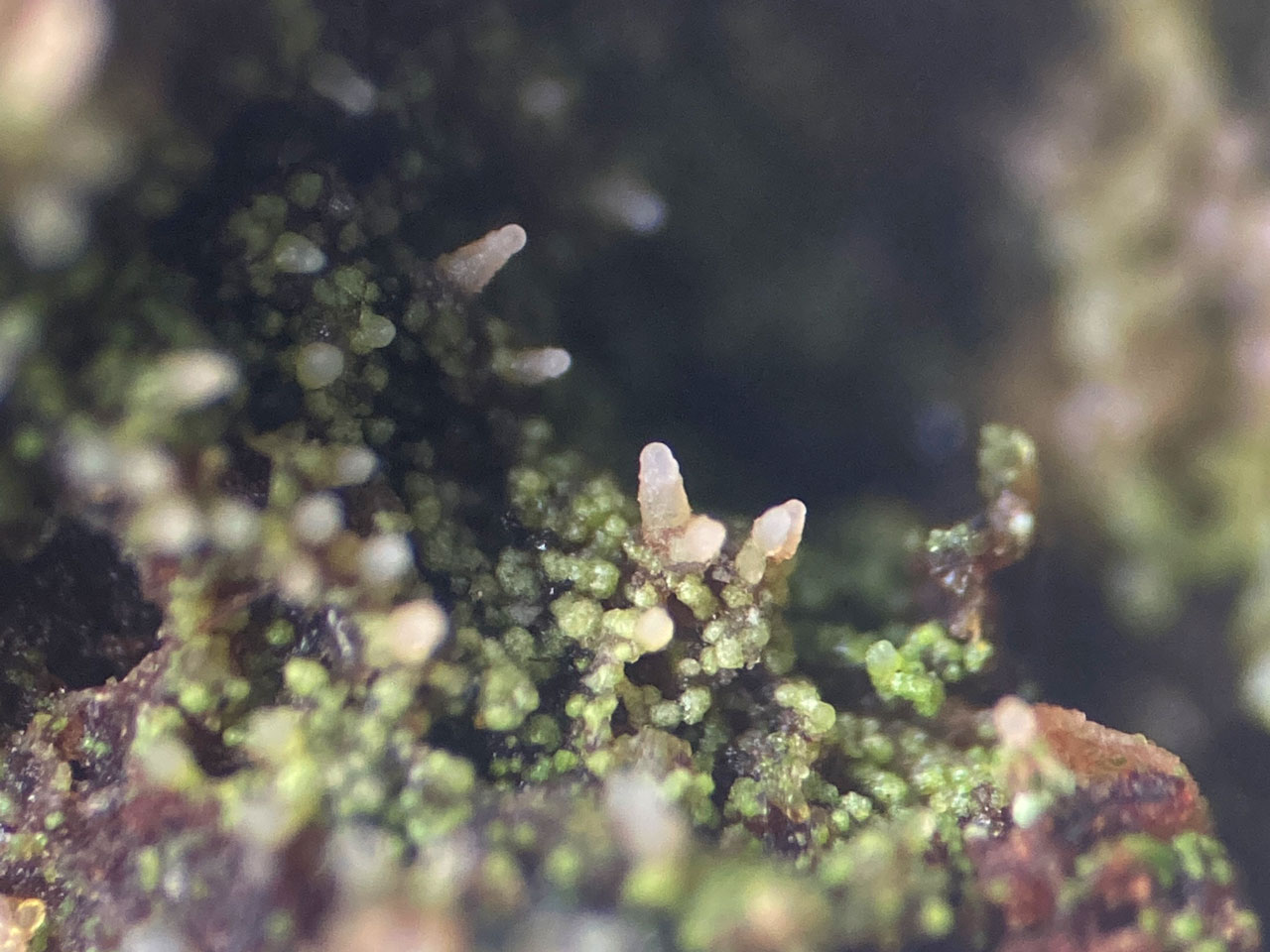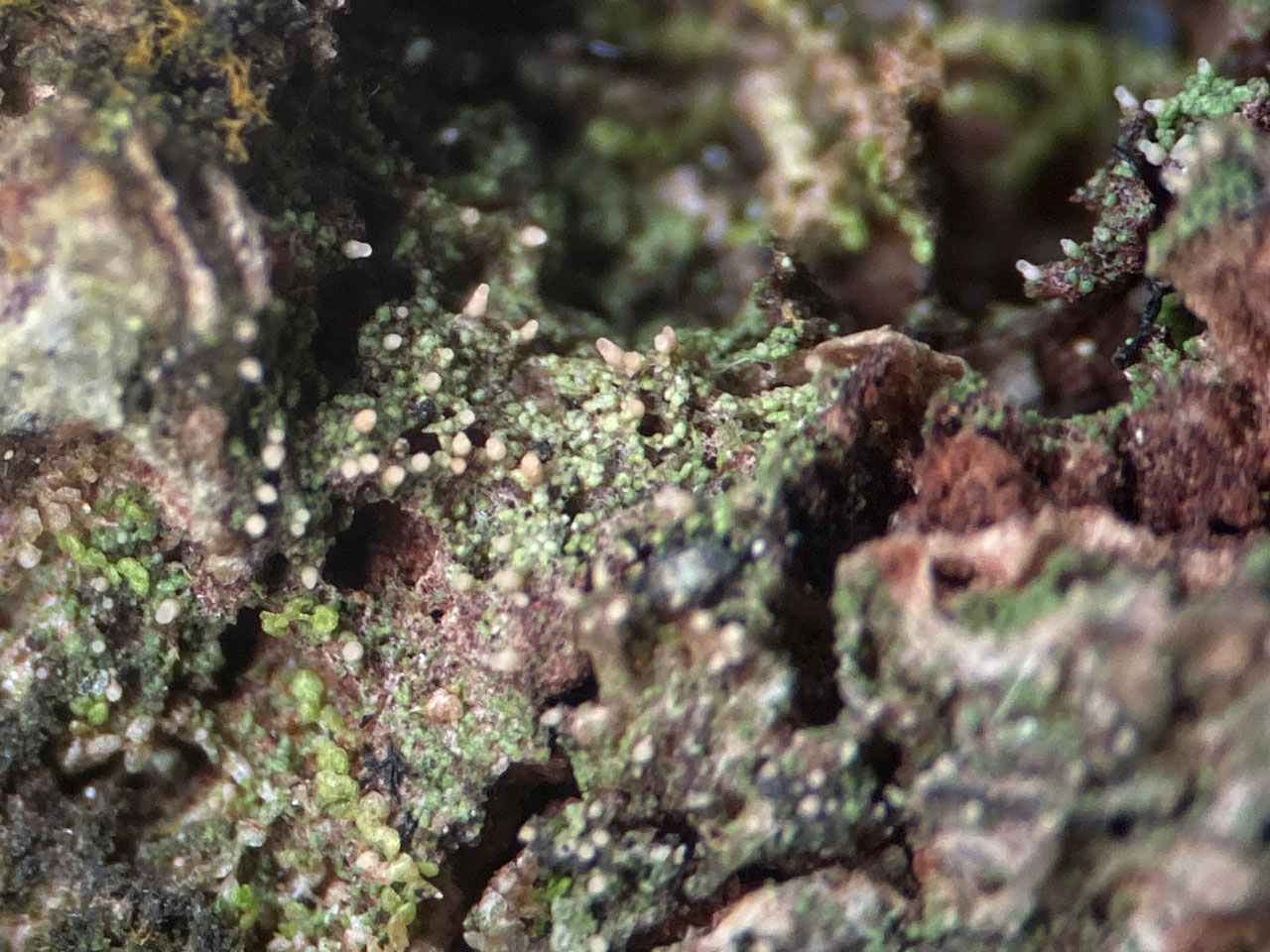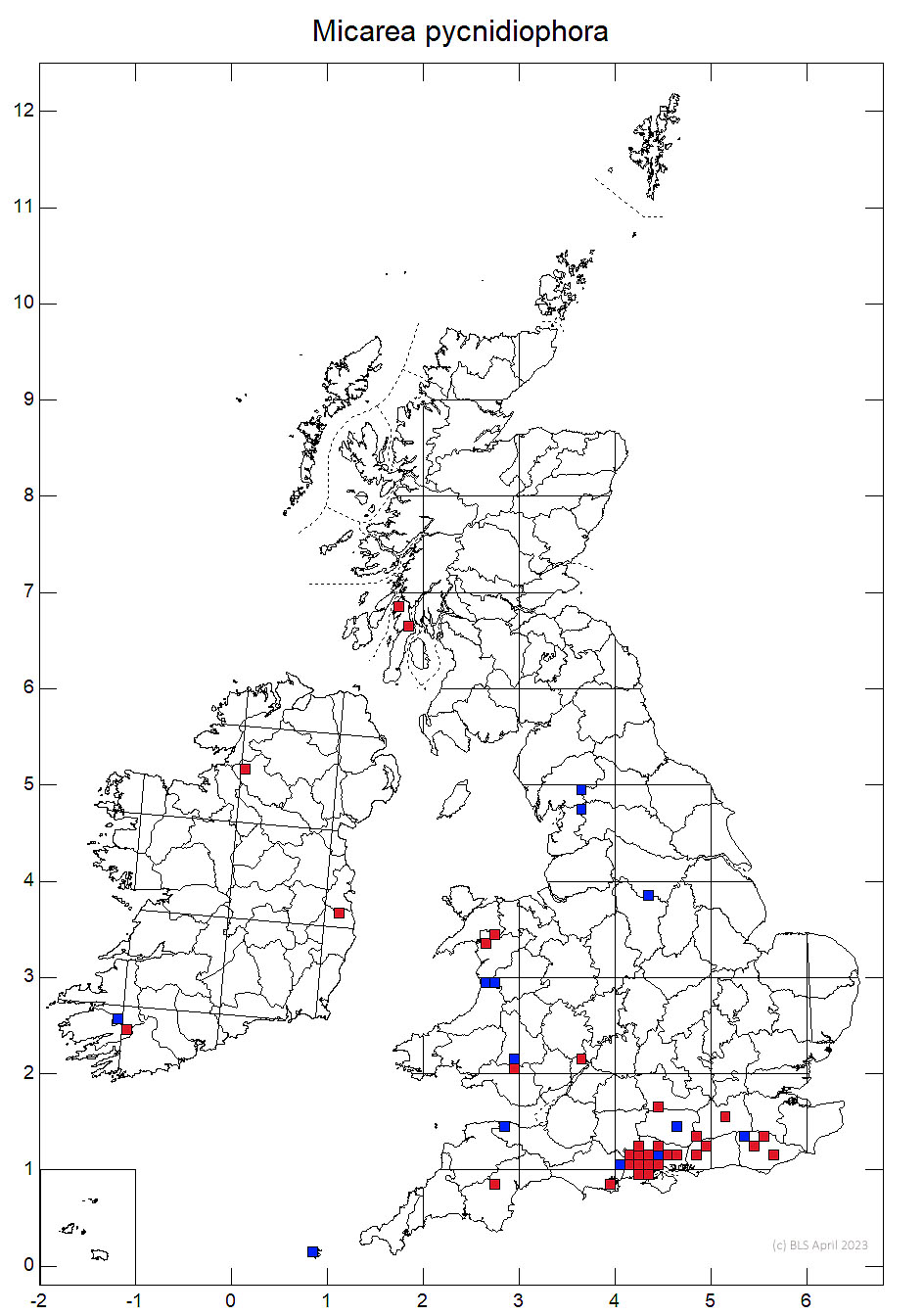Micarea pycnidiophora
This very local lichen usually needs targeted search to find. This requires scanning thin stands of bryophyte with green Micarea crusts on acid bark in humid woodlands for the distinctive small ivory coloured stalked conidia. The C+ red reaction of all parts separates this lichen from this similar Micarea stipitata. A species of warmer southern oceanic woods, especially in southern England (New Forest & the Weald). To the west and north it occurs as a curiously rare and scattered species of high quality old growth stands. A rarity of ancient Holly woods in Ireland.
Thallus dull or grey–green, continuous, thin, uneven, of more or less coalescing, verrucose granules; photobiont cells 4–8 µm diam. Apothecia 0.1–0.3 mm diam., globose to hemispherical, rounded or oval or sometimes tuberculate in outline, pallid ivory to pale flesh-coloured when dry, translucent and grey-green when moist, often absent but usually abundant when present; true exciple poorly developed; hymenium 35–50 µm tall, colourless; hypothecium colourless; paraphyses 1–1.5 µm diam., numerous, branched. Asci 30–35 × 10–12 µm. Ascospores (14–) 21–28 (–31) × 2–2.5 µm, short–acicular, 3– to 5(7)–septate. Pycnidia numerous on sterile thalli, pale ivory coloured, on simple stalks, 0.1–0.3 mm tall and c100 µm diam.; conidia 4–6 × 1–1.5 µm, straight, cylindrical. All parts C+ red , K–, Pd– (gyrophoric acid).
Like Micarea stipitata, but all parts C+ red; pycnidia less than 0.3 mm tall, never forked and ivory coloured and conidia smaller. Potentially overlooked as M. stipitata in the west; specimens with unforked and ivory coloured (i.e. more yellowish) pycnidia should be checked for C+ red reactions. Fertile material often lacks pycnidia and has abundant small apothecia.
On acid bark, especially Beech and Holly, but also Oak, Birch and Alder, rare on Oak and Yew lignum, in sheltered humid woodlands. Characteristic of warmer southern oceanic woods, especially in southern England (New Forest & the Weald) and showing an ability to colonise into young growth woods recovering from past disturbance there. To the west and north it occurs as a curiously rare and scattered species of high quality old growth stands. A rarity of ancient Holly woods in Ireland.

Very locally frequent in S.E. England (especially New Forest, Hampshire), very rare beyond, N. England, Wales, W. Scotland (Argyll), Ireland (Kerry (Killarney), Wicklow (Powerscourt Park), Fermanagh (Correl Glen)).
A rare species in Europe, with the large New Forest to Weald population supporting the bulk of the Europe known population. Would probably be Red Listed in Britain, if only the populations outside of the New Forest to Weald region were assessed. The lichen may be dependant on large areas of undisturbed woodland to build up large populations.
Britain: Notable & International Responsibility species
Wales: Near Threatened
Cannon, P., Orange, A., Aptroot, A., Sanderson, N., Coppins, B. & Simkin, J. (2022). Lecanorales: Pilocarpaceae, including the genera Aquacidia, Byssoloma, Fellhanera, Fellhaneropsis, Leimonis and Micarea. Revisions of British and Irish Lichens 27: 1-48.
Coppins, B. J. & James, P. W. (1979) New or interesting British lichens IV. Lichenologist 11: 139-179
Text by Neil A Sanderson based on Canon et al (2022) & Coppins & James (1979)
